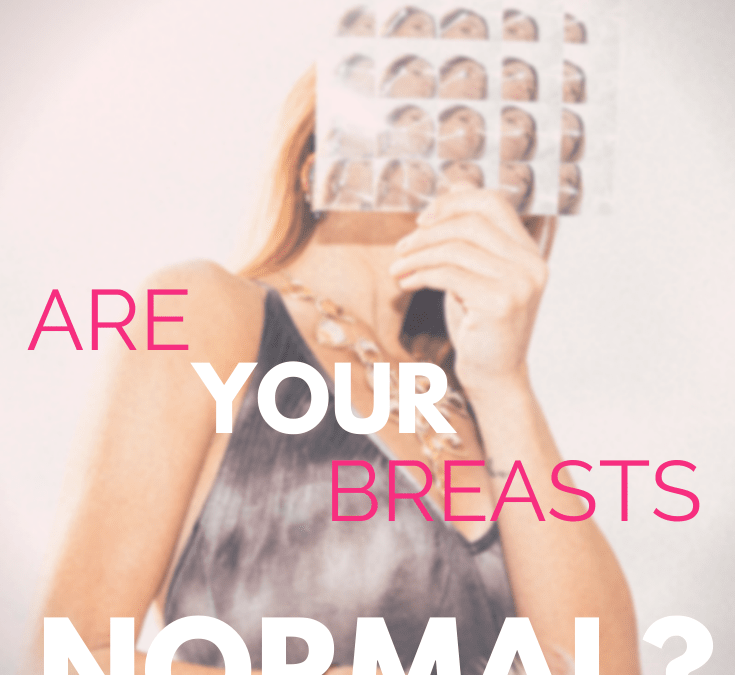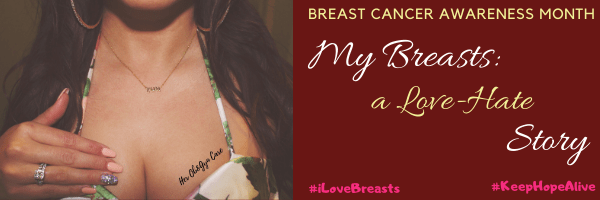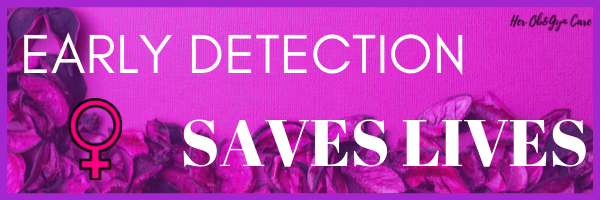The breast an integral organ for the female species. They are an essential reproductive organ.
Breasts are the most obvious symbols of feminism.
Equally, breasts are an important cosmetic or beauty asset that women are blessed with.
To prove this… I am sure that if it means changing your entire outfit you will just to ensure that your breasts feel and look good.
When women achieve that period of motherhood, the breasts play an important function of nutrition for our little tots from birth until early childhood.
The breasts are the source of the staple food for infants 0 to 6 months of age as breast milk provides the perfect balance of vitamins, minerals and macronutrient building blocks so essential for their growth.
Breast Changes & Development
Another important function of the breast is to announce that a girl’s puberty has finally begun!
This can be either an exciting time for that young child or a period of anxiety and fear.
I must say… I love when my boobs look right, but I must be honest… I developed an intense fear the day I finally noticed that those nipples on my chest were not as simple as they used to be.
If you want to hear about my love-hate story with breasts, you can read it here.
Otherwise, just keep reading…
The onset of breast development is the first secondary sexual characteristic females experience to mark the start of puberty.
It tends to happen about 6 months before pubic hairs appear.
If a female does not have breast changes by age 14 years, something is wrong, and she should be assessed for the cause of the delay.
Hormones stimulate the breasts
At birth the breasts are flat with almost no tissue below the nipple. However, between age 8 to 13 years (mostly by age 11 years) the breasts initiate their growth and evolution. This may continue up to about 18 years.
The growth of the breast occurs under the influence of the sex hormones which are circulating in the body. Oestrogen is primarily responsible for growth.
However, progesterone does have some impact on breast tissue especially when the menstrual period cycles begins.
Growth hormone and Prolactin hormone are closely involved in this process.
Tanner stages
The onset of breast development is medically termed thelarche.
Professor James Tanner in 1948 was able to give precise descriptions of how the breasts develop and other changes of puberty between the sexes, as he did a study on the effect of nutrition on growth in adolescents living in a British orphanage.
It would help if you take a trip down memory lane and recall if you went through these changes too. The 5 Tanner Stages of Breast Development is described below:
Tanner Stage 1:
The breast nipple becomes elevated from a previously flat state.
Tanner Stage 2:
A small amount of fatty breast tissue forms below the elevated nipple. The tissue which directly surrounds the nipple, called areola, widens in its diameter.
This is called the first breast bud.
At this stage, the breasts tend to feel a little sore. It’s also sensitive to touch. So, it would not be abnormal for young girls to complain of occasional tenderness or soreness during this period.
The skin around the breast may itch a bit at this time as there is stretching of the skin. I can vividly recall how much I hated this. The itching would be worse with sweating and wearing those synthetic trainer tank tops. At the time, I wasn’t aware of the remedies for this, so I had to endure this everlasting itch.
There is no cure for this yet, so we females just have to bear it. Hopefully I can find a remedy for this issue.
Tanner Stage 3:
This breast bud continues to enlarge. There is no contour on the chest to separate the breast tissue and the nipple-areola complex.
The breast will most likely have a cone-like shape.
Tanner Stage 4:
The nipple and areola get bigger and wider. This forms a secondary mound on the growing breast as the contours between the areola and the breast tissue becomes prominent.
The areola may get darker and the nipples appear more pointed. At this phase the breasts may adapt a rounder shape.
Important to note that some girls skip this stage. Can you recall if you skipped this phase?
Tanner Stage 5:
The contours of the areola and breast tissue disappear. The areola becomes flushed with the rest of the breast tissue.
The size of the breast at this stage is a marker to the size the woman’s breast will be as she gets older.
Final Breast Size
When the woman completes Tanner stage 5, the breast may continue to increase in size up to adulthood at age 18 years. The breast size at this age is usually the same as the woman progresses through adulthood.
However, other factors will influence breast size. Hence, some women may not have a ‘final’ breast size.
Diet and body fat content has a big impact on breast size. Women who have higher body fat percentage tend to have bigger breasts.
When one breast looks larger
So, it is expected by every female that the breast would grow to be the same size and at the same rate. However, it does not always follow our assumptions.
Most women will notice that there is a slight, and I mean slight difference between the size of one breast and the other.
This is totally normal.
However, if the difference is more than slight and bothersome, it may cause a woman to feel insecure and opt for reconstructive surgery to the breast to kind of ‘even out’ the difference.
Breast changes during the menses
As mentioned previously, the breast changes under the influence of progesterone mainly throughout the menstrual cycle. Oestrogen does have some influence also.
- The oestrogen influences the breast in during the menses and the period up to ovulation when the egg is released from the ovary
- After ovulation, progesterone takes over
Oestrogen and Progesterone causes the milk glands of the breast grow.
Their effect on the breast causes a sensation of :
- tenderness,
- heaviness
- a lumpy texture (in some cases)
Most women will experience this more in the week leading up to the next menstrual bleed.
I certainly do and it helps me to prepare for the start of the next cycle.
Now, once there is no pregnancy on board, the menstrual cycle will restart, and the progesterone levels will fall. The breasts will revert to their normal feel and texture at the start of the menstrual period.
Pregnancy and the Breast
If pregnancy occurs during the menstrual cycle, the breasts maintain their progesterone changes described above.
However, they increase in size. Some women may need to buy bigger bras – sometimes 2 cup sizes up!
The breast also starts to produce a super-enriched form of breastmilk called colostrum.
When the baby is born and the placenta (afterbirth) is delivered, the breast will start secreting that colostrum and then milk as the baby continues to breastfeed.
Breasts at Menopause
When women are transitioning to menopause (a period called perimenopause), they will begin to experience a number of changes.
This spans from
- size reduction
- sagging
- tenderness
- pain (mastalgia)
- lumpiness.
This lumpiness may be due to the formation of cysts. It may turn out to be fibrocystic changes, a benign condition of menopausal women.
These changes occur due to unpredictable changes in the hormones prior to the final tapering which ushers in the menopause period.
ABNORMAL Breasts
The most serious change every woman needs to be concerned about is the presence of BREAST CANCER.
It is the # 1 cause of female-related cancer deaths worldwide.
There are certain factors that put a woman at more risk for breast cancer compared to the regular population of women. I will tell you more about these risks in my next post: You may be at high risk for breast cancer.
The good thing is that though breast cancer cannot be prevented, it can be cured if detected and treated early.
Your choice to do breast cancer screening weighs heavily on your decisions of how you want to be treated as you age. I will share more of the screening guideline with you in another post of the series entitled: Breast Cancer Screening Methods.
A mammogram is the most commonly used tool for the detection of breast cancer. I will tell you more about this also in another post: Breast Cancer Screening: Are Mammograms Safe?
That’s all for now, lovies! Have a health-wise day
xoxo
References
Javed, A., & Lteif, A. (2013). Development of the human breast. Seminars in plastic surgery, 27(1), 5–12. doi: 10.1055/s-0033-1343989
https://www.healthline.com/health/parenting/stages-of-puberty#tanner-stage-3
https://www.healthline.com/health/menopause/sore-breasts-menopause#treatment
https://flo.health/menstrual-cycle/teens/your-body/breast-development-puberty






